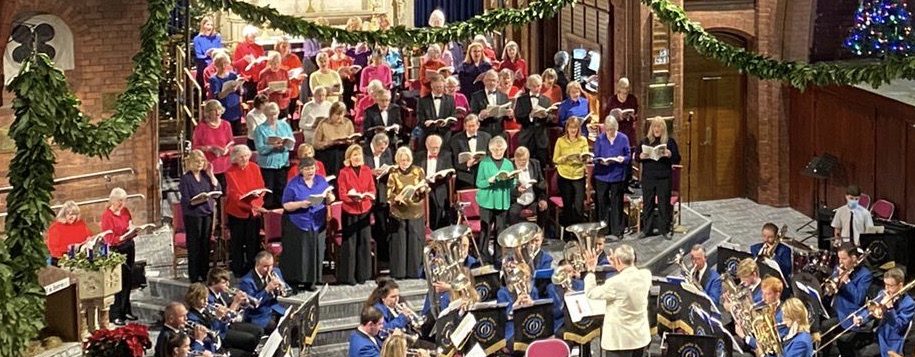Programme Notes
Handel – Coronation Anthems
| Zadok the Priest | |
| Zadok the Priest | |
| And all the people rejoiced | |
| God save the King | |
| The King shall rejoice | |
| The King shall rejoice | |
| Exceeding glad shall he be | |
| Glory and great worship | |
| Thou hast prevented him | |
| Allelujah | |
| Let thy hand be strengthened | |
| Let thy hand be strengthened | |
| Let justice and judgement | |
| Allelujah | |
One of the lasts acts of King George I before his death in 1727 was to sign “An Act for the naturalizing of George Frideric Handel and others.” Handel’s first commission as a naturalized Britsh citizen was to write the music for the coronation later that year. The four anthems Handel composed for the coronation of King George II and Queen Caroline on 11 October 1727 have never lacked popular favour. They were repeatedly performed at concerts and festivals during his life and since, and he incorporated substantial parts of them, with little change except to the words, in several oratorios, notably Esther and Deborah. (Incidentally, two of them were performed at the opening concert of Oxford’s Holywell Music Room in 1748).
Their success may have contributed to the popular image of Handel as a grandiloquent composer demanding huge forces of voices and instruments – the more the better – the figure stigmatised by Berlioz as a barrel of pork and beer! In fact Handel always matched his music to the occasion and the building for which it was written, and no occasion could be grander than a coronation. His ceremonial style in these anthems differs from his music for theatre in much the same way as the Fireworks Music, designed for performance outdoors, differs from the instrumental concerti. It is wholly extroverted in tone, dealing in masses and broad contrasts rather than delicate colour: he was not going to waste finer points of detail on the reverberant spaces of The Abbey.
The forces that he used were substantial for the period: an augmented Chapel Royal Choir of 47 and an orchestra that may have numbered as many as 160! The chorus is divided from time to time into 6 or 7 parts.
Notes thanks to Aylesbury Choral Society
Puccini – Messa di Gloria
Puccini’s Messa a quattro voici is a full mass, consisting of the six movements forming the Ordinary of the Mass (Kyrie, Gloria, Credo, Sanctus, Benedictus and Agnus Dei). Although now generally known by the name Messa di Gloria, this is strictly speaking inaccurate, because a Messe di Gloria contains only the first two movements.
Giacomo Puccini was in the fourth generation of a family of church musicians from Lucca, Tuscany. He held the post of town organist and maestro di capella at the Cathedral of San Paolino. He studied at the Instituto Musicale. In 1876 he had walked from Lucca to Pisa to hear Verdi’s Aida which was the experience that eventually made him decide to follow a career in the theatre rather than the church. He later said that he felt “that a musical window had opened for me”. The mass was composed as his graduation assignment from the Instituto, and was first performed on 12th July 1880, although the Credo had previously been written and performed in 1878 – originally as a self-contained piece. There are more than a few glimpses of the melodic, poignant and dramatic music to come from him, and much of the Mass (apart from its text that is) would have been at home in the opera house. Indeed, Puccini re-used some of his musical material in other works – the Agnus Dei, for example, finding its way into Manon Lescaut.
As apparently liturgical in origin, there are precedents for such an operatic treatment of sacred texts: Rossini’s Stabat Mater and Petite Messe Solonelle of 1832 and 1863 respectively, and of course Verdi’s Requiem of 1874. The Messa di Gloria is a remarkably mature work from an eighteen-year old Puccini, with so much rhythmic vitality, harmonic (and orchestral) colour, and a few little imaginative musical surprises along the way too.
Puccini did not publish the manuscript of the Mass, probably because he was more concerned with turning his attention to composing those operas for which he became so famous.
Given that this is a concert, rather than a liturgical performance, we have reordered the movements, placing the whole of the lengthy Gloria section after the Agnus Dei, so that the evening finishes with the fantastic unrestrained boisterousness of the cum sancto spiritu where the traditional fugal material is combined with the opening melody to bring the whole concert to a lively conclusion.
